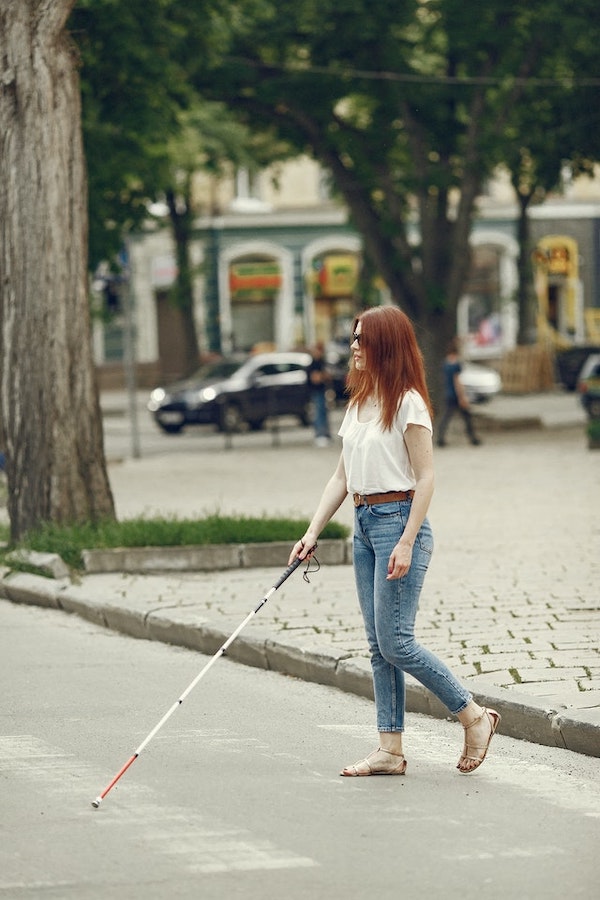Inclusion of the visually impaired: where do we stand?

In the spring of 2022, the Valentin Hauy association presented a video to talk about the digital exclusion of the visually impaired, taking Captcha validations as an example. The opportunity to ask ourselves about the inclusion of the visually impaired in society. The public authorities have kept many promises to people with disabilities. Where are we today, and what remains to be done?
Progress but still a lot to do for the inclusion of the visually impaired
The recognition of visual impairment as well as digital technological advances are an opportunity to reduce inequalities. They promote the inclusion of visually impaired people in society. A change in mentalities that has led to major advances. Access for guide dogs cannot be refused anywhere, children can start and continue their schooling with the support of an AVS (Auxiliary de Vie Scolaire) and the possibilities of introduction to Braille are increasing.
[ =]

Where the rub is in the offer offered to people with visual impairments. Access to written documents, for example, falls far short of the minimum necessary to reduce inequalities in access to culture and entertainment. Thus, there are less than 10% of literary works adapted to the visually impaired. On the Internet, the same observation: 10% of the sites would be adapted, reducing to nothing the few efforts undertaken. This restricted access to leisure reinforces inequalities between visually impaired people and the rest of the French population. Audio description currently only covers 4% of TV programmes. On the cinema side, one in five films is accessible.
What about professional integration?
We therefore notice that there is still so much to do. Not only in the field of leisure or sport. If we often highlight the initiatives of private companies or associations to facilitate the inclusion of the visually impaired, we would like to be able to say the same of public administrations.
The result? A rather shocking figure. It is considered that 50% of people with visual disabilities are unemployed! Apart from the financial problems that this causes, the social result is also catastrophic. Because it causes an isolation which does not even allow, as we have seen, to offer a substantial offer of cultural and sporting activities.
The urban environment, not yet up to standard

On the other hand, urban standards aimed at the inclusion of people with disabilities are far from having achieved their goal. The " accessibility of roads and public spaces is that any disabled person or person with reduced mobility can move and circulate at any point in the agglomeration, access all areas of the city, cross its traffic axes, rest … And this in an autonomous way, in the same way as a valid person" is still far from being a reality.
To conclude, if the inclusion of the visually impaired makes the subject of regular mentions in the media, it is regrettable that developments are too often the result of various foundations or private companies. The reduction of inequalities will necessarily pass through the public authorities, even if many devices reach the market.
This implies that without revised urban structures or the improvement of professional prospects, and faced with the evolution of visual handicaps, we take the risk of an aggravation of inequalities.
Sources: ecologie.gouv.fr Vocale Presse Association Valentin Hauy


